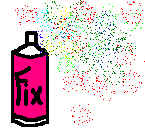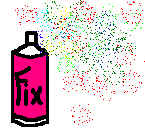


OZONE DEPLETION



|
The earth's atmosphere consists of four layers. Each layer is
characterized by its own temperatures and gases. The
lowest layer is the troposphere, appr. 8-16 km deep.
Above it is the stratosphere, which contains the ozone (O3) layer. The ozone layer absorbs and
filters ultraviolet radiation and reduces thus the amount
of harmful rays reaching the earth. The depletion of the stratospheric ozone layer was first discovered over the Antarctica in 1985. It was later found out that the ozone loss is not linear, still the decline in total ozone values is inevitable. The reduction of ozone within the stratosphere occurs principally over the poles because extreme coldness in the atmosphere around the polar areas. The thinning of the ozone layer is mainly caused by the increased anthropogenetic emission of CFC's that are (were) used in the production of refrigerators, aerosol sprays, insulating and furniture foams. The reduction in the thickness of the ozone layer will mean more radiation enters the lower atmosphere and the earth's surface. This UV-radiation causes among humans sunburn, inflammation, damage to DNA molecules (mutations) and alterations to the structure of proteins. Ozone depletion also affects human health indirectly. Many animals and plants are susceptible to UV's deleterious effects; any increase in UV radiation entering the earth will disrupt food chains. Damage to phytoplankton, fish and shrimps has already been shown. Crops and livestock will also inevitably suffer. The thinning of the ozone layer poses unknown hazards to the planet's climate. |